 If you have decided to set yourself up with a Campervan or Motorhome, rather than towing a caravan or camper-trailer, your purchasing journey will probably steer you towards choosing a van in one of four categories….
If you have decided to set yourself up with a Campervan or Motorhome, rather than towing a caravan or camper-trailer, your purchasing journey will probably steer you towards choosing a van in one of four categories….
-
- a brand new fitted-out van;
- a pre-loved fitted-out van;
- an empty van that you will have professionally fitted out;
- an empty van that you will fit out yourself
(Read: DIY options >>>).
Regardless of which of the above categories you find yourself settling in, your next decision will be based around what size van best suits your needs.
Below are some of the considerations from our journey. We purchased a medium-sized second-hand van, with a new fit-out – most closely fitting into the third category above….
Compact and Versatile
 After exploring a well-travelled trail through caravan parks, camping expos, manufacturer’s workshops and dealer’s yards, considering and evaluating a wide variety of Campervan / Motorhome / Camper-Trailer / Caravan options, we chose a 6 metre van as a base vehicle for our RV travels – a medium wheel-base (MWB) Mercedes Sprinter 316 CDI.
After exploring a well-travelled trail through caravan parks, camping expos, manufacturer’s workshops and dealer’s yards, considering and evaluating a wide variety of Campervan / Motorhome / Camper-Trailer / Caravan options, we chose a 6 metre van as a base vehicle for our RV travels – a medium wheel-base (MWB) Mercedes Sprinter 316 CDI.
In a nutshell, the MWB Sprinter drives like a car, is large enough to include a bathroom, yet small enough to park at the local shopping centre.
The Big Picture
The 6 metre (20′) MWB Sprinter is a Large Van Conversion, sometimes considered to be a sub-category of Class B motorhomes, other times a large Campervan. In the big scheme of things, this style of Campervan / Motorhome is relatively compact…
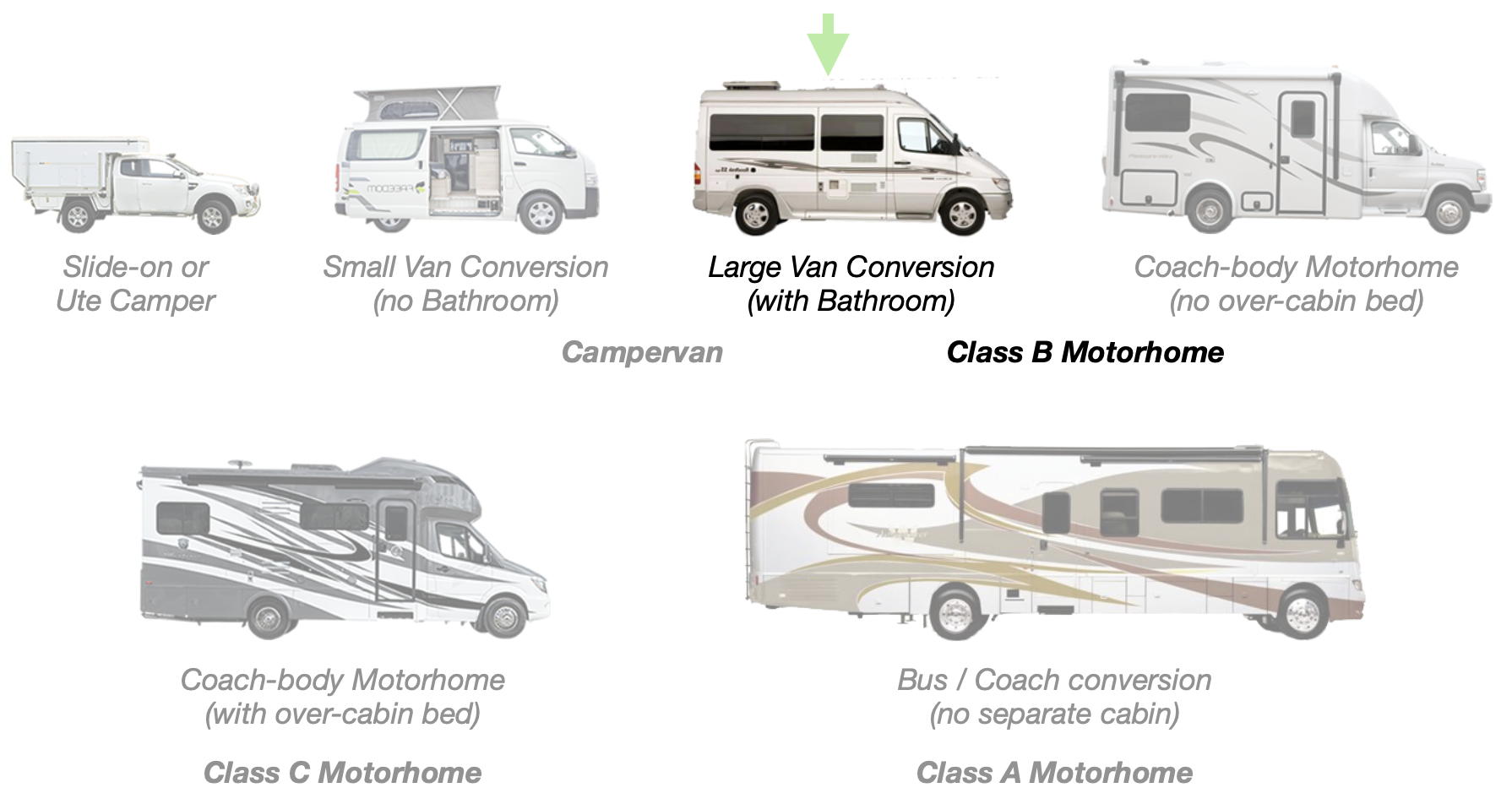
….. more compact than a Class C motorhome or a coach-body Class B motorhome (although many of the smaller models of these box chassis vans are also referred to as ‘compact’) and less compact than a pop-top Campervan.
The critical differentiation between a Campervan and Motorhome is sometimes regarded as the inclusion of a permanent shower and toilet facility in the latter. (Although even this delineation is becoming blurred with the inclusion of bathroom facilities in smaller Campervans.) Or maybe we could distinguish vans with a sliding side door as Campervans, and those with a hinged opening side door as Motorhomes?
Regardless of this classification, the MWB Sprinter has subsequently proven to be exceptionally flexible and versatile for (what for us is) a relatively large vehicle. The Sprinter van suits our needs perfectly.
-
- Read also: Is an RV right for you? >>>
Pros and Cons
Whatever your choice – large bus or small van – there are always compromises to be considered when choosing a Campervan or Motorhome.
The most suitable option depends on your needs and expectations when travelling, along with similar considerations when the van is not being used as an active camping vehicle.
We made our decision based on the following considerations:
|
|
|
|
Travel style – Our van is used for holidays for two people, not as permanent accommodation. We don’t usually spend more than a week at a time in the one location. More often our stay is for two or three nights before moving on.
When our ’20-something’ children use the van they always free-camp. Often for weeks at a time, but generally only staying a couple of nights in each location. The MWB Sprinter works well for us in both the above situations – the formal campground and the casual free-camp environments. However, If you are planning on regularly setting up camp for longer stays in the one place (say more than a week at a time), or travelling with more than two people, then a larger van may be more appropriate. If you are planning on regularly free-camping for lengthy periods of time, a larger bathroom (with a separate shower and toilet) and increased water tank capacity might also be a consideration. Either way, when considering what size van will best suit you, it is worth thinking about how you plan to travel – where you will stay, and how long you might spend in each location. |
|
|
|
|
|
Living area – Larger vans have more indoor living space. This is likely to be of greater significance on longer trips or during inclement weather.
MWB (5.9 metres) – We went with a medium wheelbase van. An overly-spacious indoor living area wasn’t a major consideration for us – we are not ‘indoors’ folk, and prefer setting up an outdoor living area when camping in fine weather, or snuggling in with a good book in crook weather. The fold-down table at the end of the kitchen bench can be used in conjunction with a swivelling passenger seat to form a separate reading or work space if required at night or in cold or rainy weather. As noted above, if you are planning on regularly staying in one location for extended periods of time, a larger van with greater indoor living space might be worthwhile. Winter camping, with earlier sunsets and cooler evenings, is also likely to result in increased use of indoor facilities. LWB (6.9 metres) – A long wheelbase van can include one or two seats behind the driver’s seat. This can be used for additional passengers (with seat belts), and is able to be part of a dinette area when the two front seats are swivelled. The trade-off is a longer van when parking or manoeuvring in tight spaces.
The LWB layout can also include an additional sleeping option, most likely for a child…
See also: |
|
|
|
|
|
If you are over 1.8m tall, a layout that provides a longer bed would be worth investigating, most likely in a long-wheelbase van. If you are considering a layout with an east-west bed (across the van), test it out with pillows and a stretch out in the bed. Fiat vans are a little wider than Mercedes vans, but I think still too narrow for anyone approaching 1.8m in height to sleep across comfortably. An east-west bed also requires one occupant to climb over the other to get out of bed. |
|
|
|
|
|
Smaller vans, such as our Sprinter, generally include a ‘wet bathroom’, where the toilet and shower share the same cubicle. This is OK for shorter free-camping excursions, with occasional showering or quick top ‘n’ tails washing, but may not be ideal if you are free-camping for weeks at a time, depending exclusively on using the on-board bathroom for regular showering. The shower is a relatively big user of your water supply, so a more dedicated shower facility would most likely require increased water-carrying capacity for extended free camping. Maybe even a separate water tank supplying only the shower. (Though on a coastal holiday, the ocean is a great body cleansing option!) If you will be staying regularly in campgrounds with town water available, a town water inlet is a worthwhile addition to your van’s plumbing facilities. See also: |
|
|
|
|
|
Water and Fuel tank capacities – Larger storage tanks (fuel / water / waste) mean longer ‘off-grid’ capability. However, with the wide availability of drinking water and fuel on most popular travel routes, consider where you are likely to be travelling and staying – and the quality of the water available at these locations – before deciding if you need additional on-board capacity.
Without being too miserly with water use, we use about 10 litres of water per day – cleaning teeth, washing dishes, flushing the toilet and washing hands. If necessary, we can reduce this daily consumption without too much effort. (Of course, when staying in a formal campground with bathroom and kitchen facilities, usage of our onboard water supply is minimal). Daily usage can jump up to 20 – 25 litres per day if we each use the shower once each day. If using the shower regularly for free camping, another separate water tank for shower use only might be handy – but more water equals more weight, impacting on your van’s GVM. (Ditto for additional fuel capacity.) If regularly staying in formal campgrounds, a town water connection reduces dependency on your onboard water tank. No need to stress too much about waste tank capacity. Your grey water waste tank doesn’t need to have the same capacity as your main water tank. Our grey water waste tank can hold 40 litres, and this has proven to be more than adequate. (You don’t want to be keeping your ‘grey’ waste water for too long anyway, as it will likely deteriorate and become ‘black’.) Sea also: |
|
|
|
|
|
Fuel consumption – Our Sprinter uses around 10 litres of diesel fuel per 100 kms, providing a ‘safe’ range of around 650 kms from our 75 litre fuel tank.
If your trips will include lots of kms, fuel consumption, and the distance available per tank of fuel, is an important consideration. A larger fuel tank will provide a greater travel range, but will impact your GVM. (1 litre of diesel fuel weighs 832g). |
|
|
|
|
|
Sustainable 12V Power – Not necessarily related to the size or type of vehicle, but definitely worth considering when assessing vans and options.
The batteries are recharged (through an appropriate charger / regulator) by:
I would consider 2 x 100 Ah AGM batteries and a 150W solar panel to be the minimum requirement for sustainable off-grid free-camping, for a van of this size. The Lithium batteries effectively double our off-grid 12V capacity (compared to AGM batteries) – but it comes at an upfront $$$ cost. Worth it if the budget has the capacity. We also carry a portable 200W solar blanket for additional off-grid battery charging capacity. This portable panel is also useful when the roof-top panel is shaded by trees. Of course, if you are planning on using the van only for short weekend getaways then a portable solar blanket might be all you need – or maybe no solar recharging facility is required at all if the vehicle alternator is able to re-charge the batteries after each overnight stay.
|
|
|
|
|
|
If there are ducted outlets in a van you are buying, check that the heating unit is a known brand name (rather than a cheap Chinese copy heater from eBay). |
|
|
|
|
|
Storage – Large externally-accessible storage lockers for chairs, tables, golf clubs, fishing gear, surfing equipment, levelling ramps, etc, is a facility usually only available in larger vans.
Our fit-out also utilises space inside the driver side sliding door for storing a second table, the LPG bottle, a tool kit, and accessing the toilet cassette. We also use our bathroom to store (sometimes wet) surf gear when travelling between locations.
|
|
|
|
|
|
The compromise here, at least with smaller vans, is usually in the availability of permanent bedding. Larger vans provide more flexibility in this department. Not too much of an issue though where the van is for use by only one or two people. |
|
|
|
|
 Driving License – Compact Motorhomes and Campervans (up to 4500 kg) can be driven with a regular Class C driver’s license. (Our Sprinter van has a GVM of 3550 kg). In NSW vehicles with a GVM between 4500 kg and 8000 kg require a Light Rigid (LR) license. Driving License – Compact Motorhomes and Campervans (up to 4500 kg) can be driven with a regular Class C driver’s license. (Our Sprinter van has a GVM of 3550 kg). In NSW vehicles with a GVM between 4500 kg and 8000 kg require a Light Rigid (LR) license. |
|
|
|
|
|
Home duties – This was an important consideration for us. We didn’t want a large van sitting idle between trips, but rather one that is able to double up as a second domestic vehicle when required.
The bedding and rear under-bed storage space can also be quickly re-configured and opened up to create a full length passage through the van to accommodate bulky items requiring local transport – such as mattresses, furniture, etc. Larger vans may sit idle for lengthy periods of time between trips, and could require a paid storage site in a non-residential area.
|
|
|
While including the convenience of an enclosed shower and toilet, the MWB Sprinter van retains the manoeuvrability and ease of driving more usually associated with a smaller vehicle. |
On the Road
 The Sprinter van drives like a large car, and will comfortably cruise at highway speeds of 100 – 110 kmh. It can also be parked in ‘nose-in’ 6 metre parking spaces at our local shopping centre and has an excellent turning circle.
The Sprinter van drives like a large car, and will comfortably cruise at highway speeds of 100 – 110 kmh. It can also be parked in ‘nose-in’ 6 metre parking spaces at our local shopping centre and has an excellent turning circle.
For those interested in mechanical specifications, the Sprinter is powered by a 2.1L turbo diesel engine, developing 120Kw power and 360Nm torque, driving the rear wheels through a 7 speed automatic transmission.
Feet up!
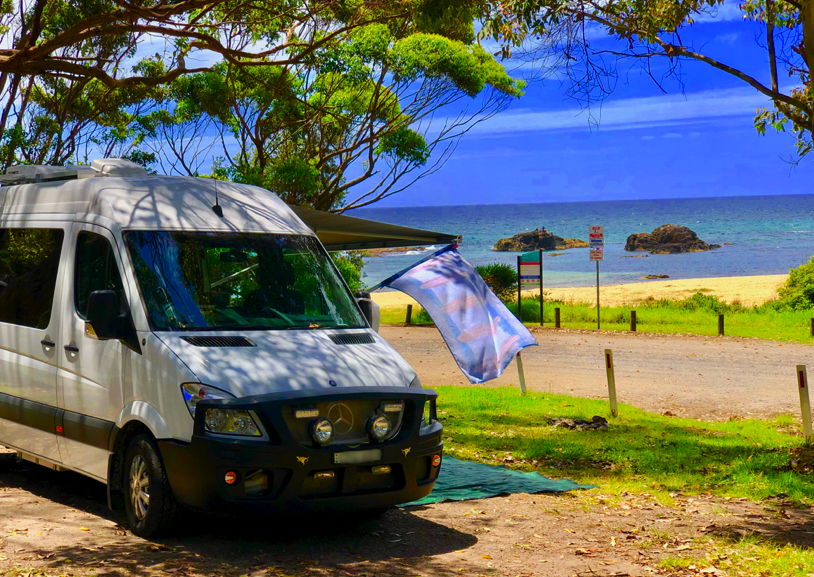 Of course, the real measure of any Campervan or Motorhome setup is how well it performs once you have turned off the engine, rolled out the awning and unfolded the chairs.
Of course, the real measure of any Campervan or Motorhome setup is how well it performs once you have turned off the engine, rolled out the awning and unfolded the chairs.
The Sprinter takes only a few minutes to transform from a highway transport vehicle to a comfortable on-site home base.
Packing up to move on again is an equally quick process – rolling up a power lead, lowering the TV antenna, turning off the gas and battening down a couple of hatches and we are on the road again.
Follow the links in the menus at the top of this page for information about our van’s fit-out, appliances, batteries, solar panels, lighting, heating, off-grid sustainability, and various ‘must-have’ accessories.
While many of the notes and suggestions in these pages refer to our particular Sprinter van, most of the information is no doubt applicable to Campervans, Motorhomes and RVs of all shapes and sizes – and varying levels of compactness!
Enjoy!
|
More reading…. |

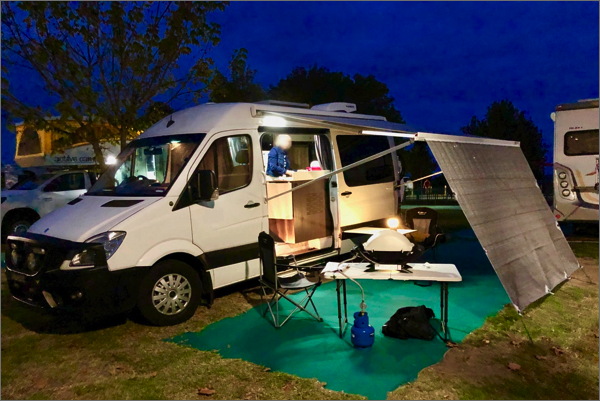 While we enjoy free-camping for a few nights while travelling between destinations, we regularly stay in caravan parks and campgrounds, utilising access to plug-in power and on-site bathroom facilities.
While we enjoy free-camping for a few nights while travelling between destinations, we regularly stay in caravan parks and campgrounds, utilising access to plug-in power and on-site bathroom facilities.
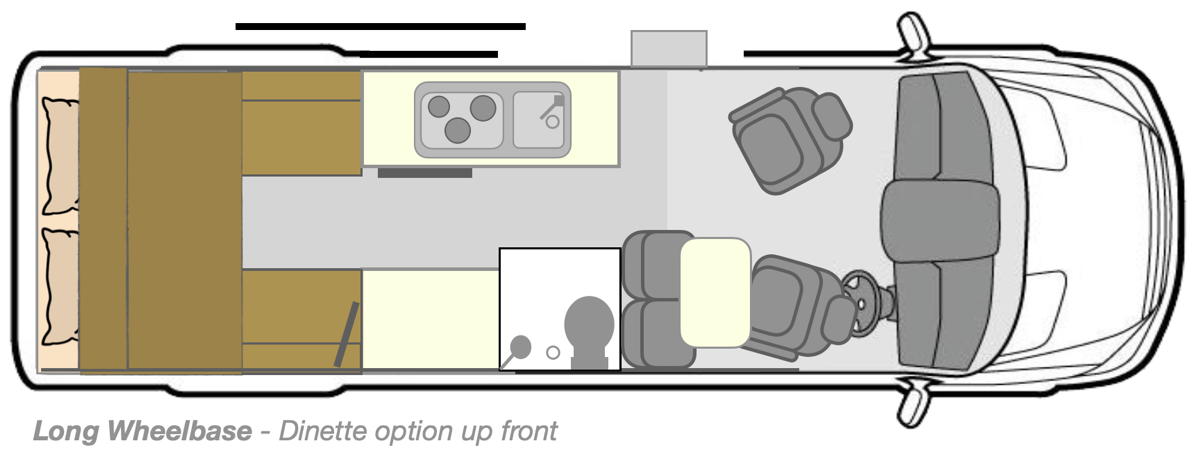

 Bed size – We are both under 6ft (1.8m) tall. The bed in our van is 1850mm long and 1670mm wide, which is fine for our average-size bodies.
Bed size – We are both under 6ft (1.8m) tall. The bed in our van is 1850mm long and 1670mm wide, which is fine for our average-size bodies. Bathroom – Having a toilet and shower onboard creates a convenient self-contained environment. Free-camping becomes an easier option, and those middle-of-the-night whizz-bang excursions are avoided.
Bathroom – Having a toilet and shower onboard creates a convenient self-contained environment. Free-camping becomes an easier option, and those middle-of-the-night whizz-bang excursions are avoided. We have a 75 litre water tank, which, used carefully, is fine for several days free-camping, including quick showers each day. (We also carry an additional 10 litres of water, in 2 x 5 litre containers, as a ‘reserve’ supply.)
We have a 75 litre water tank, which, used carefully, is fine for several days free-camping, including quick showers each day. (We also carry an additional 10 litres of water, in 2 x 5 litre containers, as a ‘reserve’ supply.) Larger vans or large vehicles towing caravans can use twice as much fuel (or more), which becomes a substantial cost when travelling long distances.
Larger vans or large vehicles towing caravans can use twice as much fuel (or more), which becomes a substantial cost when travelling long distances.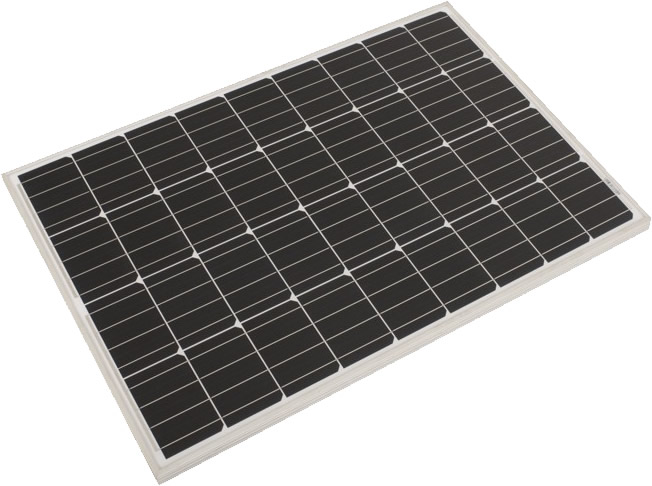 We recently
We recently  Heating – Again, not necessarily related to the size of the van, but it is definitely worth checking for a ducted air heating system when looking for a van. Essential (well, sort of essential!) for travel anywhere away from the coast in winter if not staying in powered sites where you can use an electric fan heater.
Heating – Again, not necessarily related to the size of the van, but it is definitely worth checking for a ducted air heating system when looking for a van. Essential (well, sort of essential!) for travel anywhere away from the coast in winter if not staying in powered sites where you can use an electric fan heater. We are fortunate to have a happy compromise available in the
We are fortunate to have a happy compromise available in the 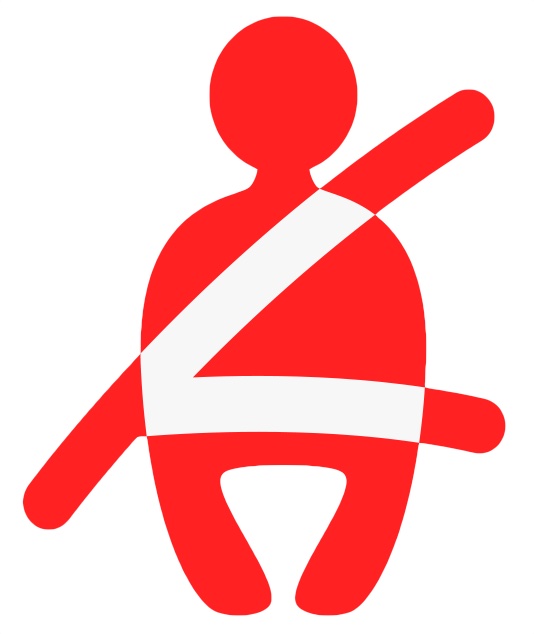 Seating capacity – Most manufacturers offer a fit-out option that includes rear seats fitted with seat belts. This is essential if you are travelling with children, or for daily use around town with passengers.
Seating capacity – Most manufacturers offer a fit-out option that includes rear seats fitted with seat belts. This is essential if you are travelling with children, or for daily use around town with passengers.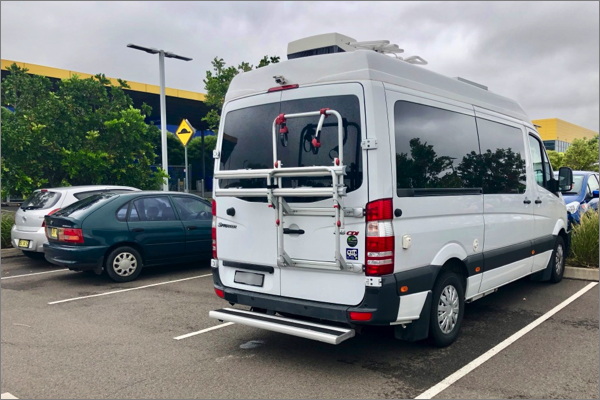 A smaller van can be parked in a residential driveway, and used for local transport. Our
A smaller van can be parked in a residential driveway, and used for local transport. Our  It was with the above considerations in mind that we settled on the ‘compact’ MWB Sprinter van as our base vehicle.
It was with the above considerations in mind that we settled on the ‘compact’ MWB Sprinter van as our base vehicle.